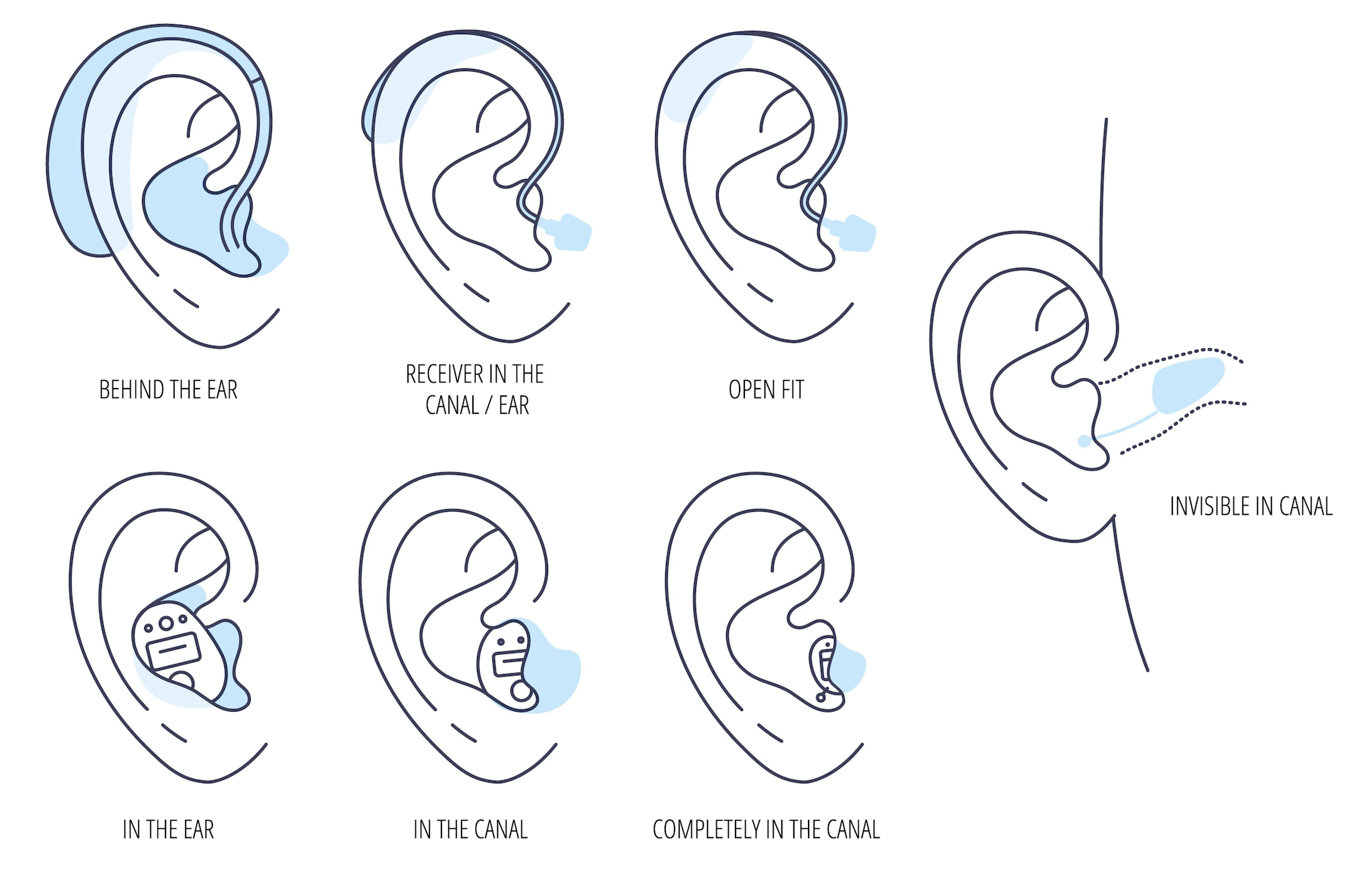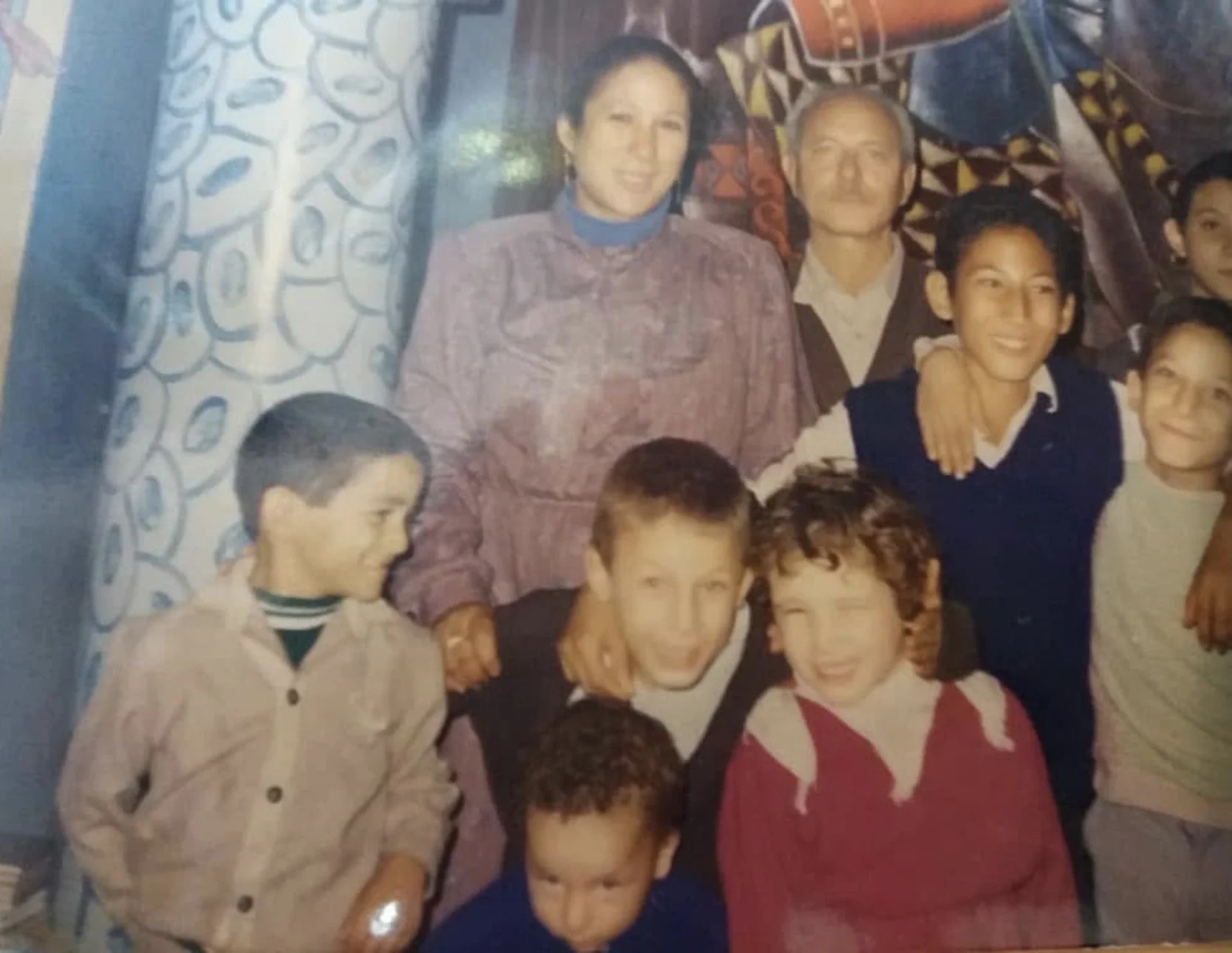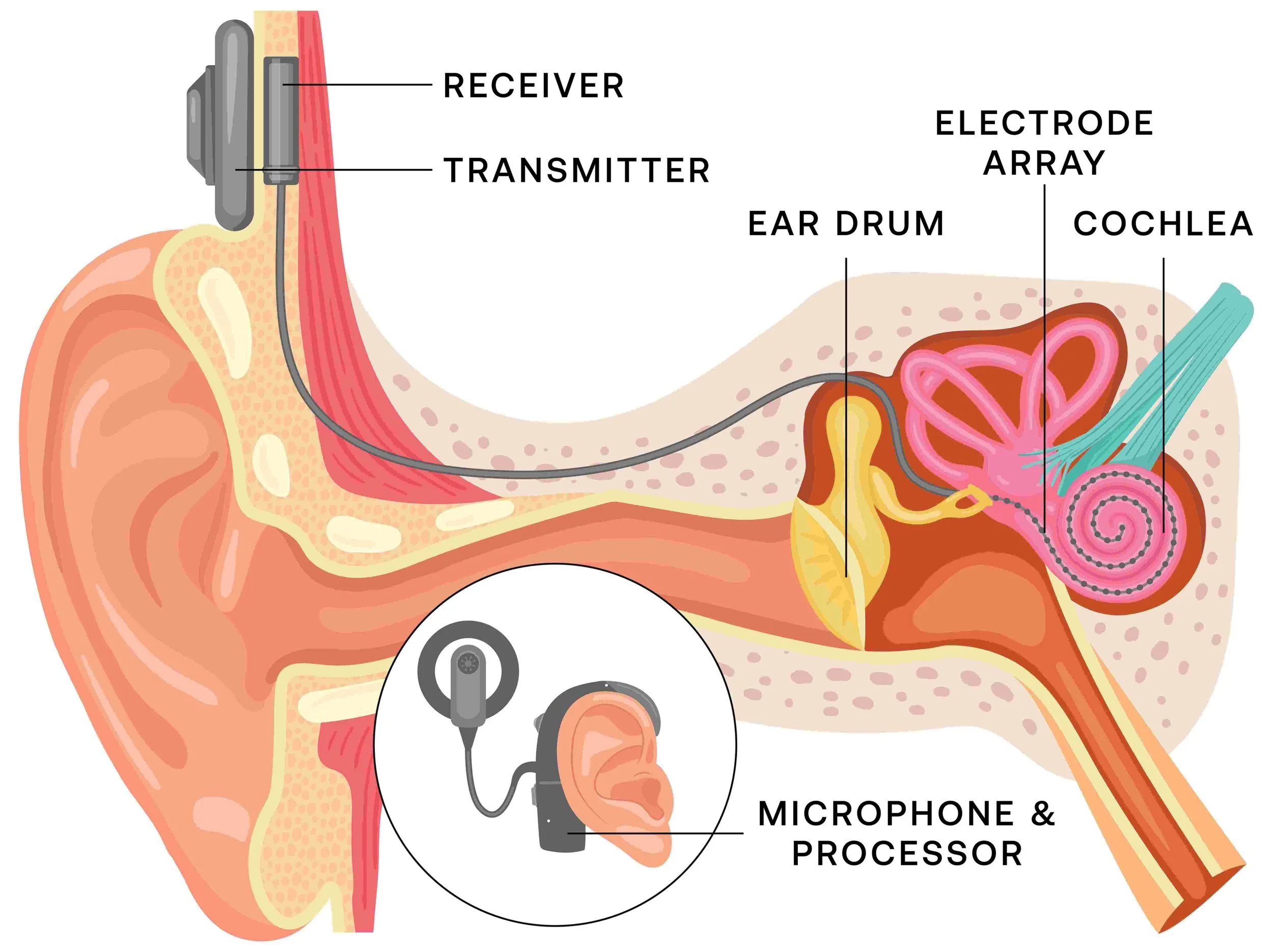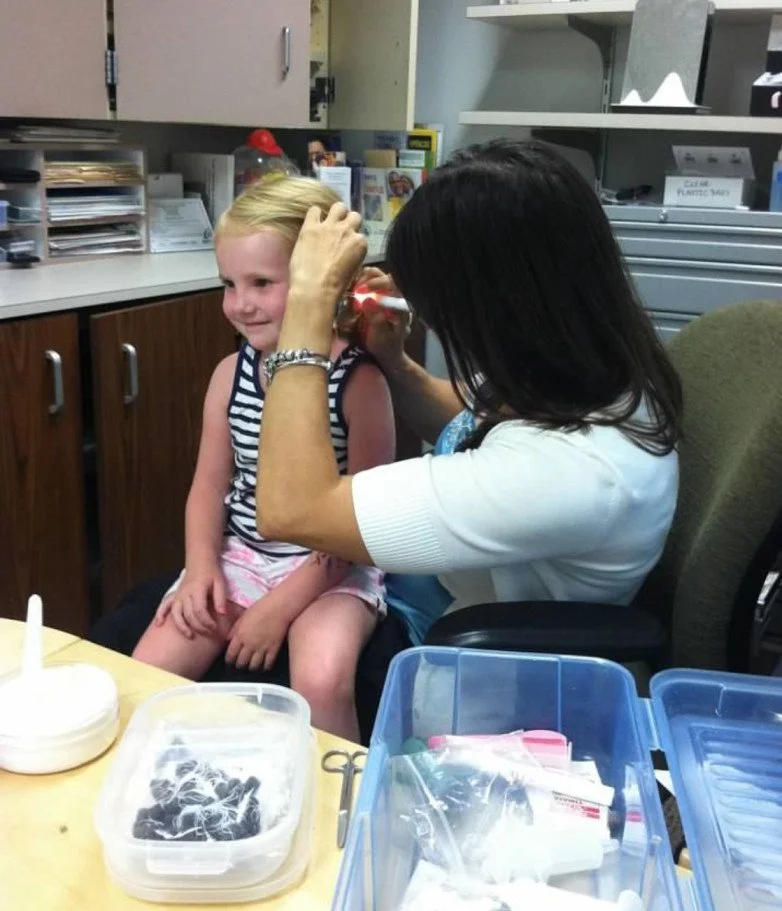Ver pagina en: English | Español
Options for Treatment
Hearing aids and cochlear implants are the most common forms of technology that enable people with hearing loss to communicate with their friends and family and contribute to overall well-being, including the potential to reduce cognitive decline and dementia. While over-the-counter hearing aids are available for adults with mild to moderate hearing loss, a visit to a healthcare professional is still recommended to rule out any serious medical issues.
A December 2022 meta-analysis in JAMA Neurology analyzing hearing aid and cochlear implant usage and cognitive ability found that it was associated with a 19 percent decrease in the risk of cognitive decline, including dementia, and that the use of hearing devices was linked to improved memory and performance on cognitive tests even after just a few months. A January 2024 report in The Lancet Healthy Longevity using population-based data for nearly 10,000 adults found that regular hearing aid use was linked to a 24 percent cut in the risk for early death among people with hearing loss.
Hearing Aids
A hearing aid is a small battery-powered device designed to improve one’s hearing.
There are several designs and types of hearing aids that exist to best accommodate one's individual hearing loss. They can differ in size, placement, and sound amplification. Technology is always evolving, so ask your hearing care professional about what is best for you and your hearing needs. If you think you might need hearing aids, here’s where to start.
Credit: Katja Frischbutter/Shutterstock
Behind the Ear (BTE)
This style of hearing aid, indicated for the range of hearing loss (mild to profound), is often the best option for children because the earmolds can change as they grow. The hearing aid rests behind your ear and connects to the custom fit earmold with a piece of clear tubing. Because this is the largest option, it may be the easiest to handle and is capable of more amplification than other styles, explaining why it is particularly helpful for children, those who need a larger device that is easier to handle, and those with a more severe hearing loss.
Behind the Ear (Open Fit)
According to the Mayo Clinic, this type of hearing aid is a variation of the BTE hearing aid, but is less visible due to a thinner tube and smaller size. It allows for low-frequency sounds to enter the ear and for high frequency sounds to be amplified. An advantage of this style is that it does not block the ear canal. It allows for the sounds that enter the ear to be more natural and for the device to be more comfortable in the ear.
According to a literature review published in Trends in Hearing, “The advantages include less occlusion [when the user’s own voice is perceived as too loud, ‘boomy,’ or ‘hollow’], improved own-voice perception and sound quality, and increased localization performance. The disadvantages associated with open-fit hearing aids include reduced benefits of directional microphones and noise reduction, as well as less compression and less available gain before feedback.”
“Open fit hearing aids leave your ear canal at least partially open and are now state-of-the-art for high-frequency hearing loss. Open fit hearing aids allow low frequency and mid frequency sounds into the ear normally, so that only high frequency sounds are amplified,” the Mayo Clinic says.
Receiver in the Ear/Canal (RITE)
The Mayo Clinic describes receiver-in-the-ear hearing aids as very similar to BTE hearing aids. The body of the hearing aid remains behind the ear, however, a tiny wire connects to the speaker as opposed to a tube and the speaker is in the ear instead of behind it. This feature makes RITE hearing aids less visible than BTE hearing aids. They are indicated for a range of hearing loss, mild to severe.
In the Ear (ITE)
In-the-ear hearing aids can be custom made in two styles, full shell and half shell, and are most helpful for people with moderate to severe hearing loss. The American-Speech-Language-Hearing Association (ASHA) says that because this type of hearing aid is larger than canal aids, it makes them easier to handle. The larger size also allows for a larger battery and a longer battery life as well as the ability to include volume control features.
In the Canal (ITC)
This type of hearing aid is molded and fits partly in the ear canal, specifically the outer ear bowl. Because this style is slightly larger than CIC hearing aids, it allows for a longer battery life and helps individuals with wider ranges of hearing loss. This style also includes features such as directional microphones and manual controls for volume that will not fit on the small design of CIC hearing aids.
Completely in the Canal (CIC)/Invisible in the Canal (IIC)
"CIC hearing aids are optimal for people with mild hearing loss," says Evelyn Venn-Davies, Au.D., Ph.D., of the University of Minnesota. They are the smallest and least visible type of aids available and are molded to fit inside the ear canal. CIC hearing aids are the least likely to pick up excess noise like wind, but due to their small size, they may not contain extra features that other types of aids have, such as telecoils (t-coils) to connect to hearing loops, volume control, or a microphone.
Over the Counter (OTC)
This is a new category whose guidelines were released by the Food and Drug Administration in October 2022. These self-fitting hearing devices, available without needing to see a doctor for an exam to get a prescription, are meant to treat mild to moderate hearing loss among adults. Input from a hearing care professional to assess the degree and type of hearing loss, rule out other medical issues, and treatment options is still recommended. A similar type of device not regulated by the FDA, “hearables” are earbuds with Bluetooth wireless connectivity. According to Hearing Tracker, hearables with Bluetooth allow the user to customize according to listening environments with a smartphone or tablet. Provided by a hearing devices industry group, HearWell has a FAQ about OTC devices.
Earlens®
Earlens is a unique type of hearing aid that uses a tiny lens instead of a speaker to amplify sound. In December 2021, the company released a three-part Hearing Review study of clinical research data based on more than 10 years of patient usage.
Implants
Cochlear Implant
Cochlear implants are best for people with severe to profound hearing loss who do not or no longer show any benefit from a hearing aid. They are also helpful for people with single-sided deafness, and for infants or children born with a severe to profound hearing loss so that their speech and language development is not impeded. This device has a magnetic internal coil and an ear-worn, sound processor that resembles a behind-the-ear hearing aid. Using a microphone, the processor captures sound signals and sends them via an external transmitter to a receiver implanted under the skin behind the ear, according to the American Cochlear Implant (ACI) Alliance.
The receiver sends these signals to an electrode array implanted in the cochlea. The signals stimulate the auditory nerve. “The transmitted information is then sent to the brain, which ‘learns’ to interpret the signal as meaningful information,” ACI Alliance says.
The Mayo Clinic notes, “These sounds won't be just like natural hearing. It takes time and training to learn to interpret the signals received from a cochlear implant. Within three to six months of use, most people with cochlear implants make considerable gains in understanding speech.”
To be eligible for a cochlear implant, one must have hearing loss that interrupts spoken communication, limited benefit from hearing aids, and no medical factors that may increase the risks associated with the implants. See more information from the ACI Alliance, including an FAQ on CIs for infants and children and what to expect during and after CI surgery.
Middle Ear and Bone-Anchored Implants
These types of implants may be indicated for people who do not benefit from traditional hearing aids or cannot use them. According to ENT & Audiology News, “Bone-anchored hearing systems (BAHS) work through bone conduction, while active middle ear implants (AMEI) most often work through amplification of the vibration of the ossicles. BAHS and AMEI can be used in the treatment of moderate to severe conductive, sensorineural, or mixed hearing loss, but not in severe to profound sensorineural hearing loss, when a cochlear implant may be indicated.”
The material on this page is for general information only and is not intended for diagnostic or treatment purposes.














During holiday family gatherings, the signs of hearing loss can become especially apparent.